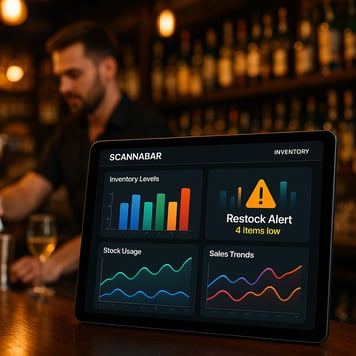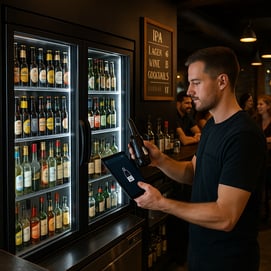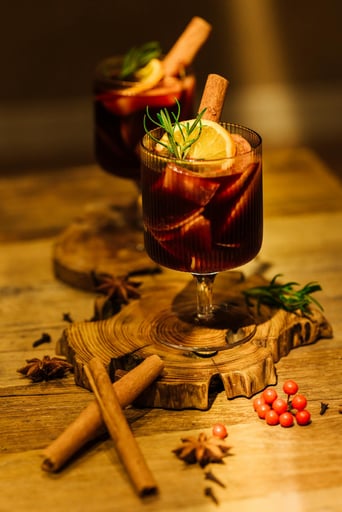Unlock the full potential of your hotel's beverage program by integrating powerful inventory control apps that transform data into actionable insights.
Transforming Beverage Operations Through Data-Driven Insights
The hospitality industry is rapidly embracing data-driven approaches to streamline operations and enhance the guest experience. For hotel purchasers and beverage managers, leveraging data analytics through inventory control apps can revolutionize how beverage programs are managed. These apps gather and process vast amounts of information, translating raw numbers into actionable insights that inform purchasing decisions, identify sales trends, and reveal underperforming products.
For hotel purchasers and beverage managers, leveraging data analytics through inventory control apps can revolutionize how beverage programs are managed. These apps gather and process vast amounts of information, translating raw numbers into actionable insights that inform purchasing decisions, identify sales trends, and reveal underperforming products.
By converting traditional guesswork into informed strategies, data-driven insights enable hotels to optimize their beverage selections, tailor offerings to guest preferences, and respond quickly to market changes. This shift not only improves operational efficiency but also boosts revenue and guest satisfaction.
Key Features of Leading Inventory Control Apps for Hotels
Not all inventory control apps are created equal. The best solutions for hotels come equipped with features specifically tailored to the unique demands of hospitality beverage management. Look for apps that offer real-time inventory tracking, automated ordering, and detailed analytics dashboards. These features help hotel purchasers maintain optimal stock levels and reduce manual labor.
Additionally, integration with point-of-sale (POS) systems, compatibility with mobile devices, and customizable reporting are essential. Robust security protocols and user-friendly interfaces ensure that staff at all levels can seamlessly adopt and benefit from the technology.
Reducing Waste and Maximizing Profitability with Real-Time Analytics
One of the most significant advantages of using inventory control apps is the ability to monitor inventory in real time. This immediate visibility helps hotel purchasers quickly identify discrepancies, track usage patterns, and prevent both overstocking and stockouts. By reducing excess inventory and minimizing expired or unused products, hotels can dramatically cut waste.
Real-time analytics also highlight high-margin and high-demand products, allowing purchasers to make data-backed decisions that drive profitability. As a result, hotels can refine their beverage offerings, negotiate better supplier terms, and achieve a healthier bottom line.
Integrating Inventory Control Apps with Existing Hotel Systems
To unlock the full value of inventory control apps, seamless integration with existing hotel management systems is crucial. When these apps connect with property management systems (PMS), POS platforms, and accounting software, data flows effortlessly across the organization. This integration eliminates data silos, reduces manual entry errors, and provides a holistic view of hotel operations.
A successful integration ensures that purchasing, sales, and inventory information is centralized and accessible, empowering teams to collaborate more effectively. It also enables hotels to automate complex processes, such as invoicing and supplier management, streamlining workflows and saving valuable time.
Future Trends: How AI and Machine Learning Are Shaping Beverage Analytics
Artificial intelligence (AI) and machine learning are poised to further transform hotel beverage analytics. Advanced inventory control apps are beginning to harness these technologies to predict demand, optimize ordering schedules, and personalize beverage recommendations based on guest profiles and historical data.
Looking ahead, we can expect even greater automation, smarter forecasting, and deeper insights as AI and machine learning continue to evolve. By staying ahead of these trends, hotel purchasers can ensure their beverage programs remain competitive, agile, and highly profitable.

 Discover the Allure of the Cranberry Bourbon Smash
Discover the Allure of the Cranberry Bourbon Smash

 Transform your bar into a haunted haven with spooky decorations that create an eerie atmosphere. Think cobwebs, skeletons, and dim lighting. Add some fog machines and flickering candles to set the mood.
Transform your bar into a haunted haven with spooky decorations that create an eerie atmosphere. Think cobwebs, skeletons, and dim lighting. Add some fog machines and flickering candles to set the mood.
 One of the standout features of Scannabar is its ability to provide accurate and real-time data. With just a few clicks, you can access up-to-date information on your inventory levels, helping you keep track of your stock more effectively. This real-time data is invaluable for making timely decisions and ensuring that you always have the right amount of inventory on hand.
One of the standout features of Scannabar is its ability to provide accurate and real-time data. With just a few clicks, you can access up-to-date information on your inventory levels, helping you keep track of your stock more effectively. This real-time data is invaluable for making timely decisions and ensuring that you always have the right amount of inventory on hand.

 Understanding Your Target Audience
Understanding Your Target Audience
